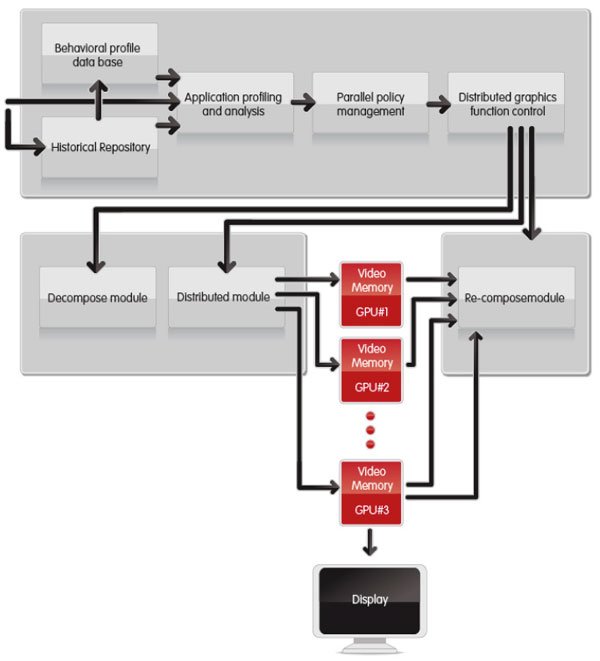Adding this chip to a motherboard will allow motherboard makers to create boards that can support multiple graphics cards from AMD, NVIDIA and even VIA (S3). You can use GeForce 6800 and GeForce GTX 280 cards at the same time but unfortunately it won't be possible to mix cards from AMD and NVIDIA as Windows can only run one graphics driver at the same time.
Furthermore, this chip can also be incorporated into dual-GPU cards like the Radeon HD 4870 X2. One of the interesting things here is that Lucid claims HYDRA has nearly linear scaling on up to four GPUs! If true that's significantly better than the 50-70% scaling offered by SLI or CrossFire.
At its most basic level the HYDRA Engine is an attempt to build a completely GPU-independent graphics scaling technology - imagine having NVIDIA graphics cards from the GeForce 6600 to the GTX 280 working together with little to no software overhead with nearly linear performance scaling. HYDRA uses both software and hardware designed by Lucid to improve gaming performance seamlessly to the application and graphics cards themselves and uses dedicated hardware logic to balance graphics information between the CPU and GPUs.The first HYDRA implementations are expected in 2009.
Why does Lucid feel the traditional methods that NVIDIA and AMD/ATI have been implementing are not up to the challenge? The two primary multi-GPU rendering modes that both companies use are split frame rendering and alternate frame rendering. Lucid challenges that both have significant pitfalls that their HYDRA Engine technology can correct. For split frame rendering the down side is the need for all GPUs to replicate ALL the texture and geometry data and thus memory bandwidth and geometry shader limitations of a single GPU remain. For alternate frame rendering the drawback is latency introduced by alternating frames between X GPUs and latency required for inter-frame dependency resolution.
